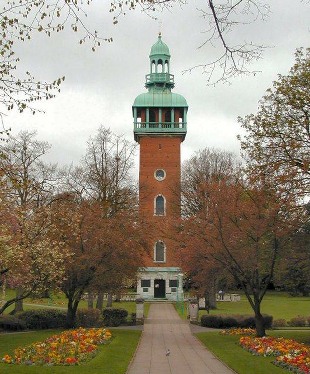



The Parish Church of St George the Martyr, Waterlooville

From 1919 onwards war memorials were erected in every town and village in the country to commemorate the enormous losses sustained during the First World War. One of the finest and unusual memorials was built in Loughborough Leicestershire in memory of the 480 men from the town who lost their lives. On 6 November 1919 the townspeople were asked to vote for their choice of war memorial. Three options were given. First some form of conventional memorial, secondly a health centre and thirdly a tower and carillon. Despite the high cost (£20,000) the majority opted for the carillon. The contract to build the tower was given to the local firm William Moss & Son whilst the carillon with its 47 bells was contracted to John Taylor & Sons another local firm.
The main 151 foot tower was built of two inch red bricks on a base of Portland stone. The bells were placed in a wooden gallery with a domed roof surmounted by a ball and a golden cross. The total weight of the 47 bells was 21 tons. The largest bell weighed 82 cwts and was 5 feet in height and the smallest bell was 20 lbs. The memorial was unveiled in Queens Park on Sunday 27 July 1923 by Field Marshall Sir William Robertson and dedicated by the Bishop of Peterborough.
The carillon was first played that day by Chevalier Jef Denyn of Malines, Belgium. The famous composer Sir Edward Elgar had composed “Memorial Chimes” for the occasion. The names of the fallen were inscribed on four bronze tablets at the base of the tower. Many individuals who had lost sons in the war paid to have their names inscribed on the bells. The largest bell for instance commemorates three brothers who died -
Two more tablets have been added to commemorate the 180 men killed in the Second World War.
The tower is approached by a long avenue amidst lawns and flower-
John Symonds
Summer 2015
Loughborough War Memorial
